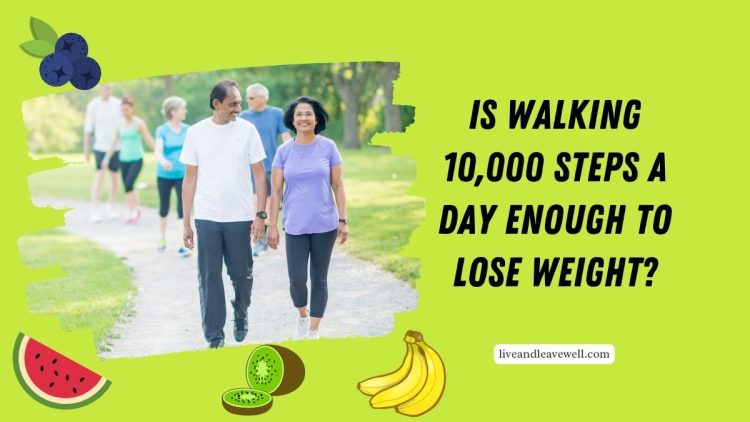With the rise of fitness trackers and step-counting apps, the idea of walking 10,000 steps a day has become a go-to benchmark for health. But is walking 10,000 steps a day enough for weight loss, or is there more to the story?
Let’s break down the science, debunk some myths, and explore how walking can be a powerful weight loss tool when used strategically.
Where Did the 10,000 Steps Myth Come From?
The concept of 10,000 steps originated in Japan in the 1960s, not from a scientific study but as a marketing strategy by a pedometer company before the Tokyo Olympics. Despite this, it caught on and became the golden standard for daily activity goals.
But according to recent health studies, you don’t always need to hit the 10,000 mark to see benefits. In fact:
| Step Count | Health Impact |
|---|---|
| 2,600 steps | Linked to reduced mortality risk |
| 5,000 steps | Improvement in cardiovascular health |
| 8,000–10,000 | Enhanced fat loss, reduced cancer risk |
So while 10,000 steps is not mandatory, aiming higher offers added benefits.
Does Walking Help You Lose Weight?
Absolutely—when done consistently. Walking is a low-impact, sustainable cardio workout that helps burn calories while being easy on your joints.
- Walking at 3.5 mph burns approximately 300–400 calories per hour for someone weighing 155–180 pounds.
- To lose 1 pound of fat, you must burn 3,500 calories, which means adding 5–6 hours of brisk walking per week can drive weight loss, especially when combined with a calorie-controlled diet.
Keys to Making Walking Effective for Weight Loss
Simply counting steps isn’t enough. Here’s how to make your walking sessions work:
1. Vary Your Speed and Terrain
Introduce intervals or hilly routes to boost heart rate and calorie burn.
2. Walk With Purpose
Instead of incidental steps (like pacing around the house), set aside structured walking sessions.
3. Track Your Progress
Using a fitness tracker can help you stay accountable and measure improvements in distance, speed, and consistency.
4. Use Inclines or Weighted Backpacks
Walking uphill or carrying a small load adds resistance, increasing both calorie burn and muscle engagement.
Sample 4-Week Walking Plan for Beginners
| Week | Daily Walking Time | Target Steps | Focus |
|---|---|---|---|
| Week 1 | 15 minutes | 3,000–5,000 | Establish routine |
| Week 2 | 25 minutes | 5,000–7,000 | Add speed bursts |
| Week 3 | 35 minutes | 7,000–9,000 | Introduce hills or treadmill |
| Week 4 | 45–60 minutes | 10,000+ | Push endurance and pace |
This gradual increase helps build endurance without overwhelming your body.
Why Walking May Work Better Than Intense Exercise
For many people, high-intensity workouts lead to burnout or injury. Walking is sustainable and easier to stick with long term. It also allows for daily consistency, which is more important than occasional intense workouts when it comes to weight loss.
Enhance Weight Loss by Combining Walking with Diet
Remember, walking alone might not be enough if your diet is poor. Focus on:
- Balanced meals with lean proteins, whole grains, and vegetables
- Reducing processed sugar and high-fat foods
- Staying hydrated
The equation is simple: calories out > calories in = weight loss
So, is walking 10,000 steps a day enough for weight loss? Yes—if done consistently, strategically, and combined with a healthy diet.
You don’t need fancy gym memberships or extreme routines. With the right pace, intensity, and dedication, walking can absolutely be your path to long-term, sustainable weight loss.
Let walking be your first step toward a healthier lifestyle—literally. Would you like a custom 4-week walking schedule tailored to your fitness level?
FAQs
How many calories can I burn walking 10,000 steps a day?
It depends on weight and pace, but on average, 300–500 calories are burned with 10,000 brisk steps.
Is walking better than running for weight loss?
Running burns more calories, but walking is more sustainable and easier to stick with consistently for many people.
Do I need to walk 10,000 steps at once?
No, you can break it into sessions throughout the day—consistency is what matters most.

